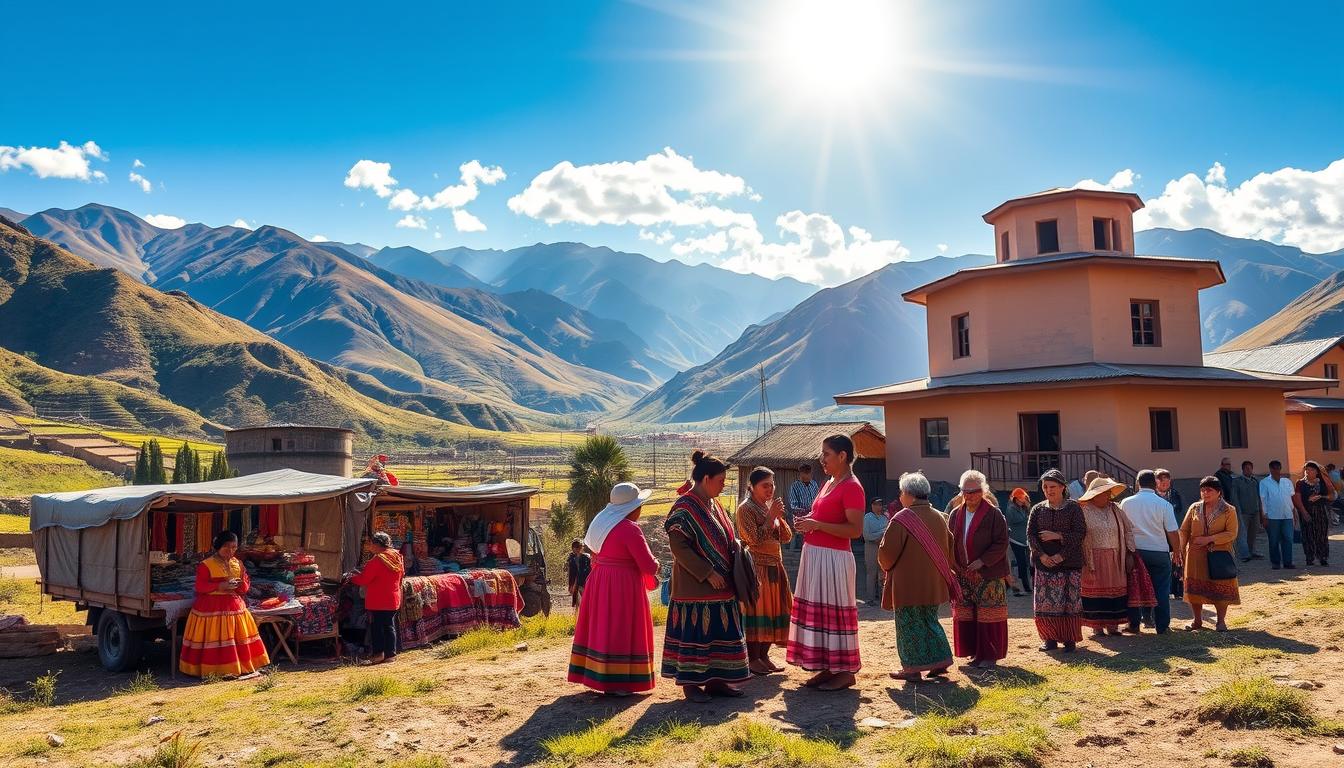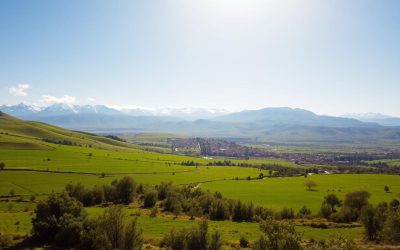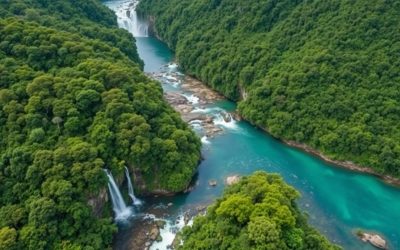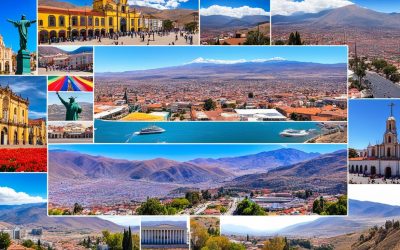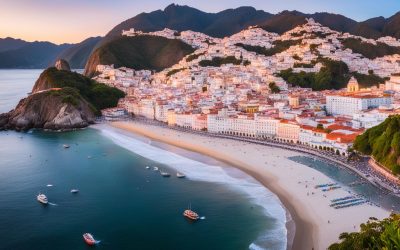Have you ever thought about how one country can have over 37 official languages and still be united? Bolivia is a great example of language diversity. Here, languages are more than just a way to talk; they are cultural treasures.
In this lively South American country, languages share stories of indigenous roots, colonial past, and today’s culture. Spanish is the main official language, spoken by 44.80% of people. But, 36 indigenous languages also play a big role, showing the country’s rich mix of cultures.
From the Andean mountains to the lowlands, Bolivia’s language scene is a mix of many voices. It shows the diversity of ethnic groups and their unique ways of expressing culture. Each language holds the stories, traditions, and memories of many generations.
Key Takeaways
- Bolivia officially recognizes 37 languages
- Spanish is spoken by nearly 45% of the population
- Quechua and Aymara are significant indigenous languages
- Languages represent cultural identity beyond communication
- Bolivia has one of the world’s most diverse linguistic environments
Understanding Bolivia’s Linguistic Landscape
Bolivia is a vibrant example of language diversity. It has 37 officially recognized languages. This shows the country’s rich cultural heritage.
Spanish is the main language in Bolivia, with about 90% of people speaking it. But, the language scene is more complex than just numbers.
Historical Development of Languages in Bolivia
The history of languages in Bolivia is long and rich. Indigenous languages like Quechua and Aymara were here before Spanish. These languages hold cultural memories.
- Quechua: Spoken by approximately 15% as a first language
- Aymara: Primary language for about 25% of the population
- Spanish: Official language for 60-70% of inhabitants
Cultural Significance of Language Diversity
Every language in Bolivia has its own story. Indigenous languages keep traditional knowledge alive. In rural markets, Quechua is often used, showing these languages are still alive.
Impact on National Identity
Language in Bolivia is more than just talking. It shows who we are. With over 50% of people identifying as indigenous, languages help preserve culture and pride.
“Languages are the roadmaps of a culture. They tell you where its people come from and where they are going.” – Rita Mae Brown
Spanish Language Dominance in Bolivia
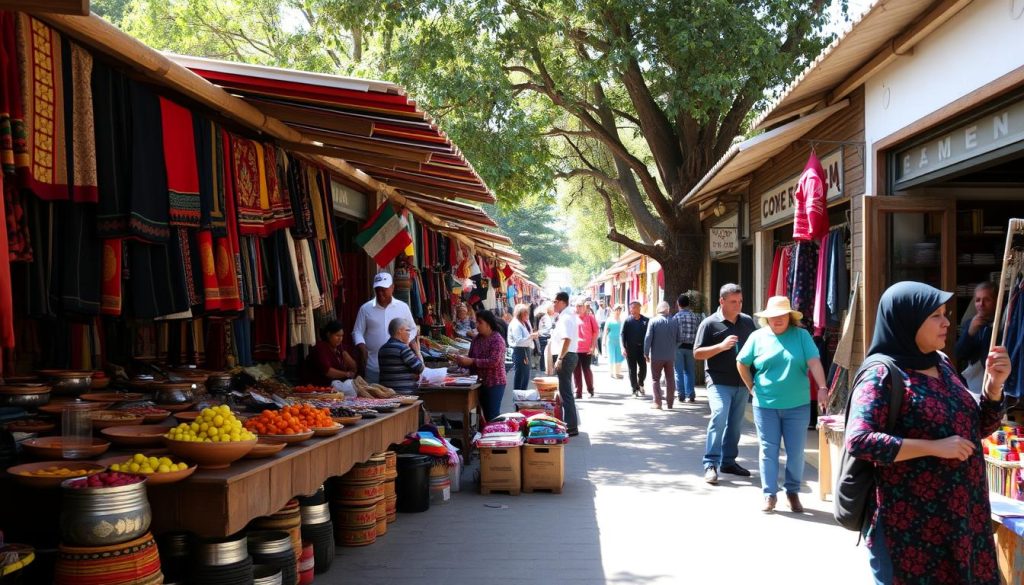
Spanish is the main language in Bolivia, deeply woven into the country’s culture and society. About 75% of people speak Spanish. It’s used in government, schools, media, and everyday life.
Bolivian Spanish has its own special traits, showing the country’s rich language diversity. There are five main Spanish dialects in Bolivia:
- Castilian
- Vallegrandino
- Andean
- Chapaco
- Valluno
- Camba
Bolivian Spanish is more than just a language; it’s a way to express culture. Around 60.7% of Bolivians speak Spanish as their first language. This makes Spanish the most common way people talk in the country.
“Language is the road map of a culture. It tells you where its people come from and where they are going.” – Rita Mae Brown
In Bolivia, language use is a mix of Spanish and many indigenous languages. This creates a unique setting where many languages coexist.
| Language | Native Speakers (%) |
|---|---|
| Spanish | 60.7% |
| Quechua | 21.2% |
| Aymara | 14.6% |
| Guaraní | 0.6% |
Spanish plays a big role in Bolivian society, affecting people’s lives and chances for success. Bolivian Spanish keeps changing, showing the country’s vibrant culture.
Bolivia: Official and Widely Spoken Languages
Bolivia is known for its rich language diversity. It has many languages that show its cultural heritage. The country values language preservation, thanks to its constitution.
Constitutional Recognition of Languages
The 2009 Bolivian Constitution was a big step. It recognized 37 official languages. This made Bolivia a multilingual nation, celebrating its indigenous roots.
Language Distribution Across Regions
Bolivia’s language map is interesting. It shows how languages vary across regions:
- Spanish is spoken by about 75.01% of people
- Quechua has around 2,281,198 speakers
- Aymara has 1,525,321 speakers
- Guaraní supports a smaller but significant community of 62,575 speakers
Statistical Overview of Language Speakers
Bolivia’s language demographics are diverse:
- Native language speakers: 43.09% of the population
- Monolingual native language speakers: 10.56%
- Bilingual (native and Spanish) speakers: 30.12%
- Spanish-only speakers: 44.89%
“Language is the road map of a culture. It tells you where its people come from and where they are going.” – Rita Mae Brown
This language diversity shows Bolivia’s dedication to its indigenous languages. It ensures that these languages continue to thrive today.
Indigenous Languages of Bolivia
Bolivia is a treasure trove of languages, with 39 officially recognized ones. This makes it one of the most linguistically diverse places in South America. These languages show the country’s rich cultural heritage.
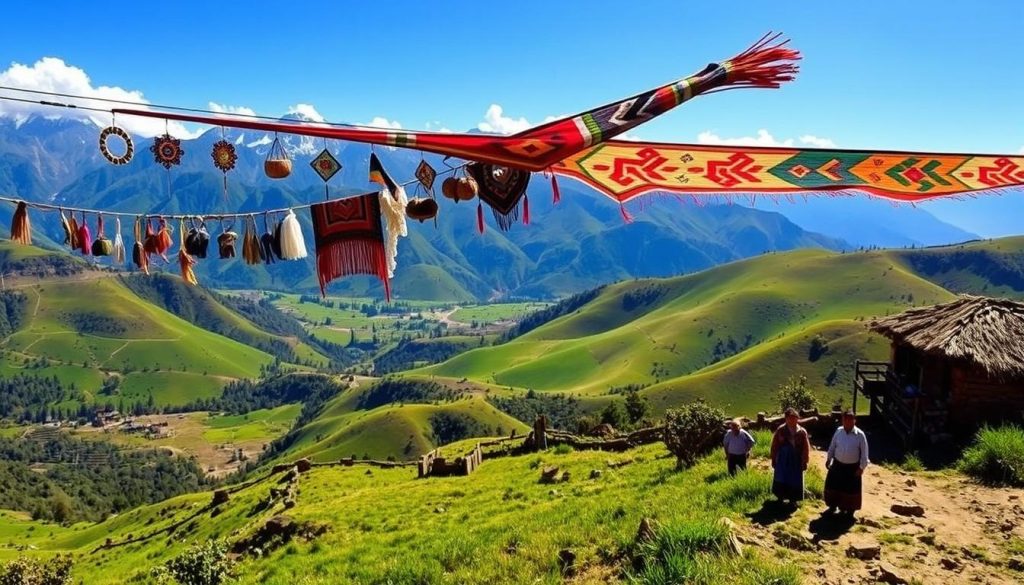
Quechua and Aymara are the two main languages in Bolivia. They are more than just ways to communicate. They are a part of Bolivia’s cultural identity.
- Quechua: Spoken by approximately 2.4 million people
- Aymara: Utilized by around 1.5 million speakers
- Both languages have deep historical roots in the Andean region
“Language is the roadmap of a culture. It tells you where its people come from and where they are going.” – Rita Mae Brown
Despite their importance, indigenous languages face big challenges. Younger generations are often choosing Spanish over them. This poses a risk to their survival.
| Language | Speakers | Region |
|---|---|---|
| Quechua | 2.4 million | Andean Highlands |
| Aymara | 1.5 million | Altiplano |
| Guaraní | 33,000 | Southeastern Bolivia |
There are efforts to save these languages. Educational programs, cultural initiatives, and government support are helping. Your understanding and appreciation can help keep these languages alive.
Multilingual Education System
Bolivia’s education system shows the country’s strong support for language diversity. Since 1994, schools have become places where language heritage is celebrated. They also work to create inclusive learning spaces.
Language Policy in Schools
The Bolivian education system values keeping indigenous languages alive while offering full education. Schools now use many languages in their lessons:
- Bilingual instruction in Spanish and indigenous languages
- Mandatory indigenous language courses
- Cultural sensitivity training for educators
Teacher Training Programs
Bolivia has special programs to help teachers teach in many languages. These programs focus on:
- Linguistic competency development
- Intercultural pedagogical approaches
- Indigenous language preservation techniques
Educational Challenges
Despite progress, the system faces challenges:
| Challenge | Impact |
|---|---|
| Limited resources | Uneven implementation across regions |
| Teacher training gaps | Inconsistent language instruction quality |
| Linguistic diversity | Complex curriculum development |
“Language is the roadmap of a culture. It tells you where its people come from and where they are going.” – Rita Mae Brown
Bolivia, with 36 official languages, keeps improving its education. It makes sure language diversity is a strength, not a barrier to learning.
Geographic Distribution of Languages
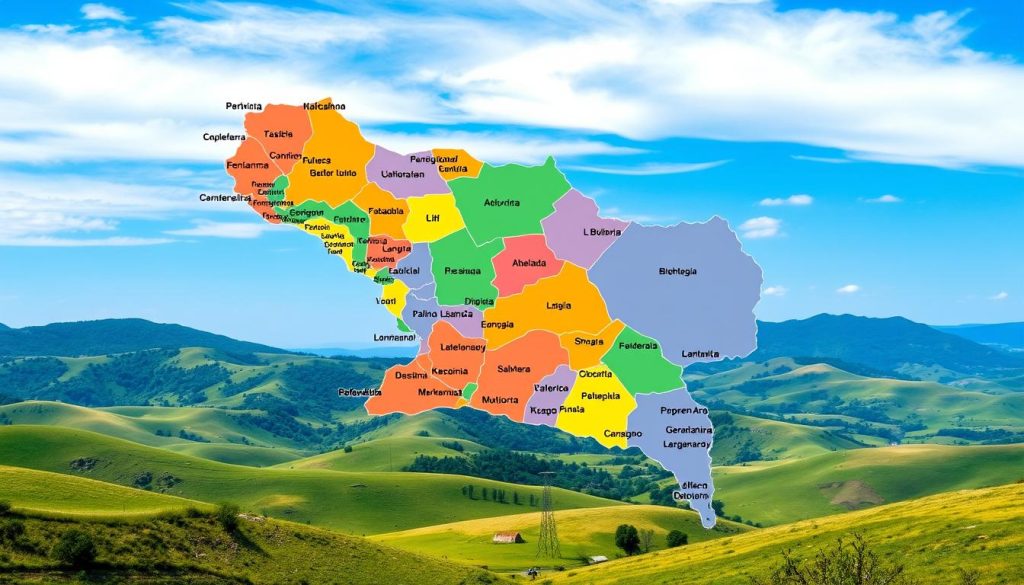
Bolivia’s languages show the country’s rich culture. You’ll see a colorful mix of languages across different areas. This mix is a key part of Bolivia’s heritage.
The way languages spread in Bolivia is interesting. It ties to the country’s geography and culture:
- Andean Region: Spanish and Quechua are common, with about 25% speaking Quechua
- Altiplano: Aymara is mainly spoken near Lake Titicaca
- Southeastern Regions: Guarani is spoken near Paraguay and Argentina
In cities like La Paz, Santa Cruz, and Cochabamba, you’ll find many languages. Spanish is the main language used here.
“Language is the roadmap of a culture. It tells you where its people come from and where they are going.” – Rita Mae Brown
Rural areas in Bolivia keep indigenous languages alive. Some places have over 50% speaking native tongues like Quechua or Aymara.
Bolivia has 37 official languages. This shows its strong effort to keep its languages and culture alive across the country.
Modern Language Usage and Trends
The digital world is changing how people talk in Bolivia. It’s a mix of old ways and new tech trends. Young Bolivians are figuring out how to use digital tools to talk and share ideas.
Digital tools like social media and messaging apps are big in Bolivia. They help change how people speak, especially among the young. They mix Spanish, native languages, and digital talk styles.
Digital Communication Impact
Digital platforms have changed how we talk. Young Bolivians are coming up with new ways to communicate. They use:
- Multilingual digital chats
- Switching between Spanish and native languages
- Creative digital ways to express themselves
Youth Language Preferences
Young people have interesting language choices. Spanish is still key, but native languages are also getting a digital boost.
Social Media Influence
Social media is opening up new ways to keep languages alive. Young Bolivians use sites like Facebook and Instagram to:
- Show off native languages
- Build online groups for language diversity
- Explore new digital ways to talk
“Language is not static; it’s a living, breathing entity that adapts to technological changes.” – Bolivian Linguistic Expert
The digital age is making Bolivia’s language scene exciting. It brings new chances for language and culture in the 21st century.
Foreign Languages in Bolivia
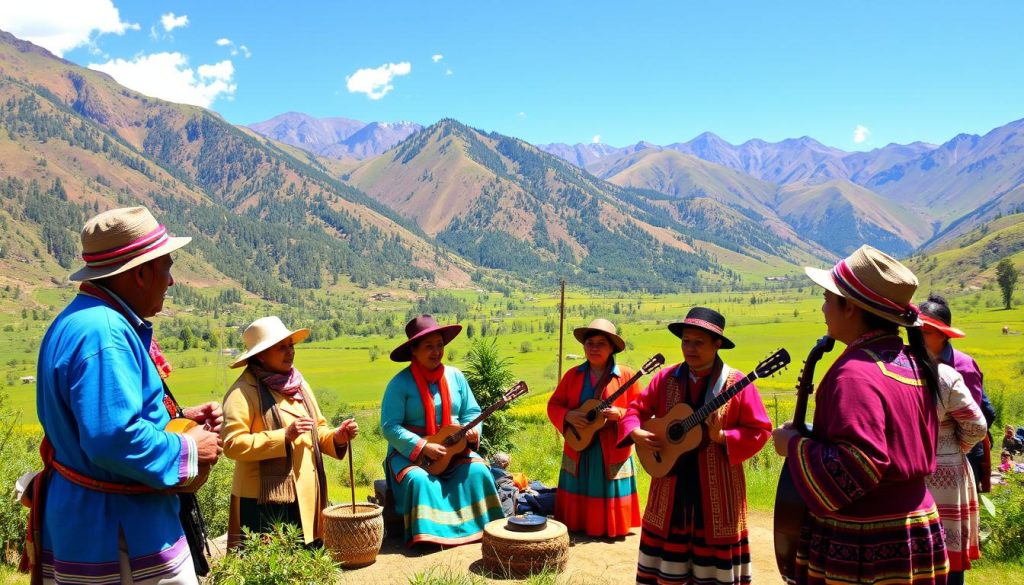
Bolivia’s language scene is rich and diverse, with many foreign languages spoken. This shows the country’s deep cultural heritage. It’s a place where different languages come together, creating a unique way of communication.
In the Santa Cruz Department, you’ll find a large German-speaking community. About 160,000 people speak Plautdietsch, a special German dialect. They are mostly Mennonites, adding to the area’s cultural richness.
- German speakers concentrated in Santa Cruz Department
- Approximately 160,000 German language speakers
- Predominantly Mennonite communities
Portuguese is also important, especially near the Brazilian border. Even though only 0.2% of Bolivians speak it first, it’s still vital for communication between the two countries.
“Language is the roadmap of a culture. It tells you where its people come from and where they are going.” – Rita Mae Brown
English is becoming more popular in Bolivia, especially in business and education. Young people see it as key for their future careers, making it a growing language in cities.
The presence of these languages shows Bolivia’s openness to different cultures. It’s a place where language lovers and cultural researchers can find much to explore.
Language Rights and Policies
Bolivia is known for its rich linguistic diversity and strong constitutional support. The country’s language rights show a deep commitment to keeping cultural heritage alive. They also aim to fix past inequalities.
The 2009 Constitution was a big step for language rights in Bolivia. It recognized 37 official languages, showing the nation’s ethnic variety. This move was bold, aiming to protect the rights of indigenous languages.
Constitutional Protections
Bolivia’s laws offer strong support for language diversity. Key points include:
- Guarantee of language use in government institutions
- Right to education in native languages
- Protection of cultural identity through language preservation
Implementation Challenges
Even with good policies, there are big challenges in making these rights real. Rural communities often face issues in using these protections. The gap between what’s promised and what happens every day is a big problem.
Government Initiatives
The Bolivian government has started several efforts to help keep languages alive:
- Multilingual education programs
- Official language training for government employees
- Cultural preservation workshops
“Language is the road map of a culture. It tells you where its people come from and where they are going.” – Rita Mae Brown
In Bolivia, about 60% speak Spanish, and 30% speak indigenous languages. The country is still working through the complex issues of language rights and cultural preservation.
Conclusion
Bolivia’s language diversity shows the nation’s rich cultural heritage. It has 37 official languages, including Spanish and 36 indigenous ones. This makes Bolivia a shining example of preserving languages and cultures.
These languages tell the story of Bolivia’s multicultural identity. They reflect the diverse ethnic groups, from Mestizo to Indigenous. This diversity is a key part of Bolivia’s identity.
In Bolivia, languages do more than just communicate. They carry stories, traditions, and history. These languages connect communities across the country’s vast 1,098,581 square kilometers.
Language is a bridge between generations in Bolivia. It helps keep cultural knowledge and social bonds alive. This is true in both urban and rural areas.
Bolivia is dedicated to preserving its language diversity. This effort shapes education, policy, and social interactions. The country’s literacy rates show the power of language in education.
High literacy rates among both men (97%) and women (91%) highlight this. Bolivia’s language heritage is alive and evolving. It adapts to new challenges while keeping traditional roots.
Exploring Bolivia’s language dynamics offers insights into a nation that values cultural complexity. Whether you’re into languages, cultural research, or just curious, Bolivia is a great example. It shows how languages can live together and thrive in one country.
The above is subject to change.
Check back often to TRAVEL.COM for the latest travel tips and deals.
Here are some Tours & Sightseeing suggestions that might pique your interests!
